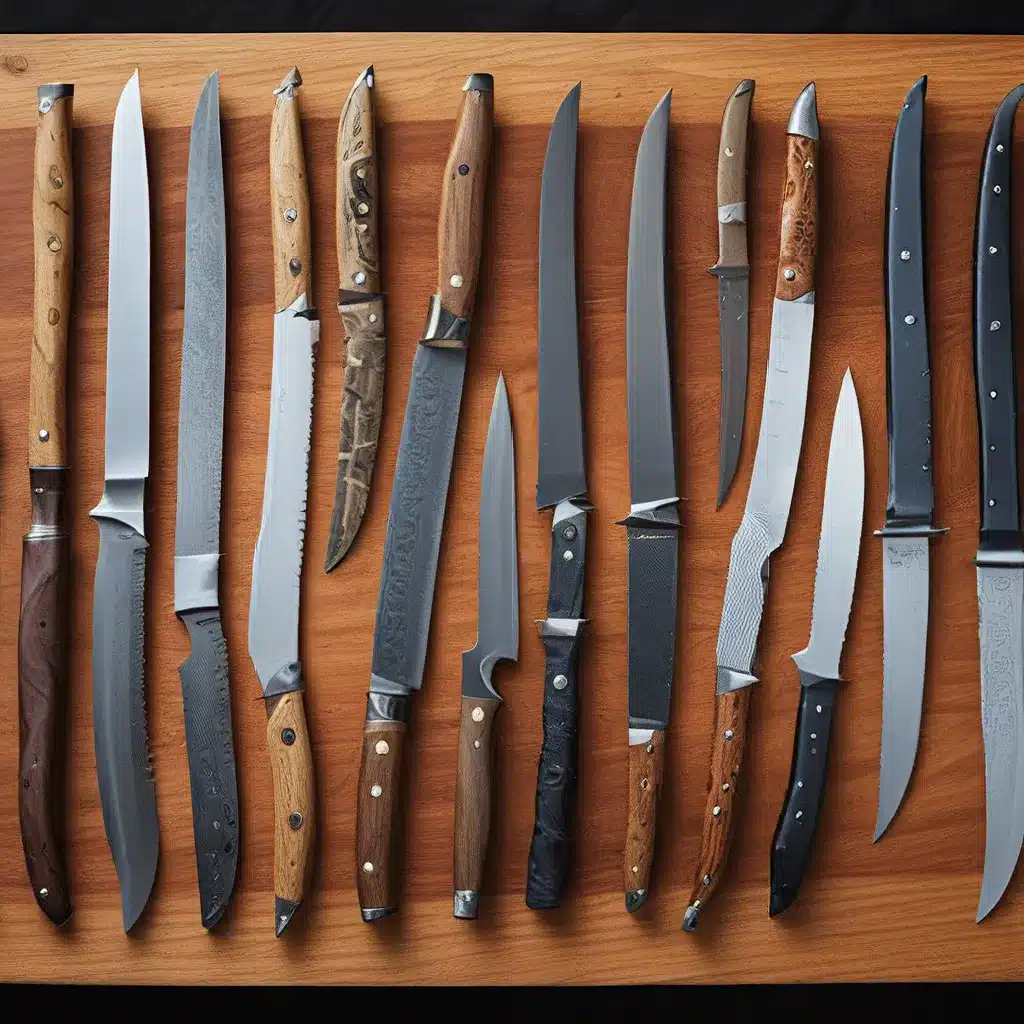
Ah, the humble knife – a tool that has accompanied humanity since the dawn of civilization. As I delve into the fascinating history of these everyday implements, I can’t help but be awestruck by the remarkable journey they’ve taken through the ages. From the primitive stone blades of our ancestors to the sleek, high-tech marvels of today, the evolution of knives is a captivating tale worth exploring.
The Dawn of Blades: Primitive Cutting Tools
Let’s journey back in time to the earliest days of human existence, where our ancestors relied on the most basic of tools for their survival. Stone knives, crafted from flint or obsidian, were the first cutting implements, their sharp edges used for everything from butchering animals to carving wood. These primitive blades, often hafted onto wooden handles, were the precursors to the knives we know and use today.
As human society progressed, so too did the technology behind these essential tools. The advent of metalworking marked a significant turning point, with bronze and later iron blades replacing their stone predecessors. The Mesopotamians, known for their innovations in metallurgy, are credited with developing some of the earliest metal knives, which were prized for their durability and cutting power.
The Rise of Specialized Blades
With the passage of time, knives evolved to serve increasingly specialized purposes. In ancient Egypt, pharaohs and their nobility were often depicted wielding intricately designed ceremonial knives, used in religious rituals and as symbols of power. Meanwhile, Roman legionaries relied on sturdy combat knives, or “pugio,” as vital components of their military arsenal.
As civilizations expanded and trade routes flourished, the exchange of ideas and technologies led to a proliferation of knife styles and designs. The Japanese samurai, for instance, were renowned for their legendary katana and wakizashi swords, as well as the distinctive tanto knife, which served both practical and symbolic roles in their warrior culture.
The Emergence of Cutlery and Table Knives
While knives had long been essential tools for survival and warfare, the Middle Ages saw the rise of a new application – the table knife. As European nobility sought to elevate the dining experience, the humble knife evolved from a utilitarian implement to a refined piece of cutlery, often adorned with intricate decorations and engraved handles.
The Industrial Revolution further transformed the world of knives, as mass production techniques allowed for the creation of more affordable and accessible cutlery. This democratization of knives paved the way for their widespread adoption in households across the globe, solidifying their place as essential kitchen tools.
The Modern Knife Landscape
In the 20th century, the evolution of knives took an even more impressive turn, with advancements in materials and manufacturing processes. Stainless steel, renowned for its durability and corrosion resistance, became the material of choice for high-quality knives, while the introduction of serrated edges and non-stick coatings revolutionized the way we interact with these tools in the kitchen.
Today, the knife industry is a thriving and innovative sector, with artisanal knife makers and major manufacturers constantly pushing the boundaries of design and functionality. From the sleek folding knives favored by outdoor enthusiasts to the specialized chef’s knives beloved by culinary professionals, the modern knife truly embodies the cumulative knowledge and craftsmanship of centuries of development.
Exploring the Future of Knives
As I contemplate the remarkable journey of knives, I can’t help but wonder what the future holds for these essential tools. Will we see the integration of advanced materials, such as ceramic or carbon fiber, to create even more durable and lightweight blades? Might 3D printing revolutionize the way knives are manufactured, allowing for unprecedented levels of customization and personalization?
The possibilities are endlessly exciting, and I’m eager to see how the next chapter in the evolution of knives will unfold. One thing is certain: the humble knife, a symbol of both utility and artistry, will undoubtedly continue to play a vital role in our lives, adapting and evolving to meet the ever-changing needs of humanity.
And who knows, perhaps the Herman Knives team is already hard at work, crafting the next generation of cutting-edge blades that will redefine our understanding of this timeless tool. I, for one, can’t wait to see what they have in store.


